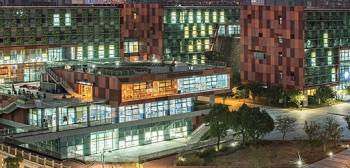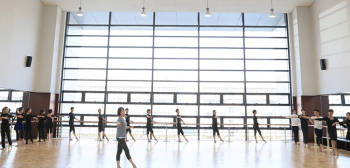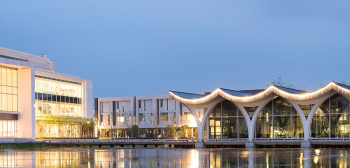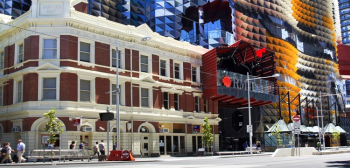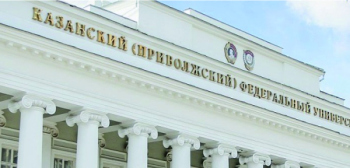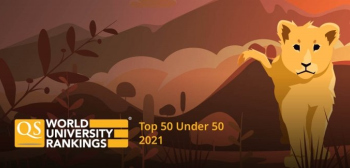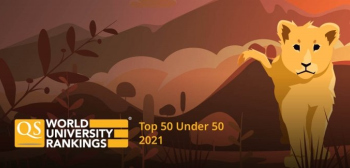南京大学
About
Read more
Read less
Nanjing University is one of China's key comprehensive universities and it functions directly under the Ministry of Education. It is located in the ancient capital of six dynasties -- Nanjing. The University dates back to 1902 when Sanjiang Normal School was founded, and then evolved as Liangjiang Normal School, Nanjing Higher Normal School, National Southeast University, the Fourth Zhongshan University, and National Central University. On August 8, 1949, the National Central University was renamed National Nanjing University. In October 1950, as required by the Ministry of Education, the name was changed to Nanjing University. In 1952, when a nationwide readjustment of universities took place, some schools, such as the School of Engineering and the School of Agriculture, were separated from the University; meanwhile, the University merged with the School of Liberal Arts and the School of Sciences of the University of Nanking, which was founded in 1888. The new university remained Nanjing University and the campus of Nanjing University moved from Sipailou to Gulou. Today, Nanjing University consists of two campuses, one in Gulou and the other in Pukou with a total area of more than 3,600 mu (nearly 600 acres). It is one of the top universities in China, with beautiful campuses and modern teaching and research facilities. Its current President is Professor Jiang Shusheng, a physicist. The University celebrates its anniversary on May 20 of each year. Nanjing University's development has always been closely bound with the destiny of the Chinese nation and linked to her ever changing society. Nanjing Higher Normal University, the predecessor of Nanjing University, played a leading role in the area of Nanjing when the Youth Democratic Movement was held on May 4, 1919. In the early 1920s, it was in this university that a group of Chinese communist forerunners introduced the theory of Marxism to the public. The Second National Conference of Chinese Communist Youth League was also held at the University. During the Anti-Japanese War, organizations like the "Natural Sciences Forum" and the "Democracy and Science Forum", headed by Pan Shu, Liang Xi and Jin Baoshan, renowned professors of National Central University, eventually became the democratic party "Jiu San Society." During the Liberation War, teachers and students of National Central University stood at the forefront through out the democratic patriotic movement. On May 20, 1947, students of National Central University initiated an "Anti-Hunger, Anti-Civil War and Anti-Persecution Movement", later known as the "May 20th Patriotic Students Movement." After the National Central University was renamed Nanjing University, the truth-seeking convention was carried forward. In May 1978, one scholar at the Philosophy Department published, in the Guangming Daily, a well-known essay entitled "Practice Is the Sole Criterion for Testing Truth" and thus evoked "a heated discussion on the criterion of truth" that attracted nationwide attention. Since Chinas reform and opening, Nanjing University has gradually developed multi-disciplinary programs in humanities, social sciences, natural sciences, technological sciences, life sciences, modern engineering and management. At present, Nanjing University has 17 schools with 50 departments. It runs 74...
About
Nanjing University is one of China's key comprehensive universities and it functions directly under the Ministry of Education. It is located in the ancient capital of six dynasties -- Nanjing. The University dates back to 1902 when Sanjiang Normal School was founded, and then evolved as Liangjiang Normal School, Nanjing Higher Normal School, National Southeast University, the Fourth Zhongshan University, and National Central University. On August 8, 1949, the National Central University was renamed National Nanjing University. In October 1950, as required by the Ministry of Education, the name was changed to Nanjing University. In 1952, when a nationwide readjustment of universities took place, some schools, such as the School of Engineering and the School of Agriculture, were separated from the University; meanwhile, the University merged with the School of Liberal Arts and the School of Sciences of the University of Nanking, which was founded in 1888. The new university remained Nanjing University and the campus of Nanjing University moved from Sipailou to Gulou. Today, Nanjing University consists of two campuses, one in Gulou and the other in Pukou with a total area of more than 3,600 mu (nearly 600 acres). It is one of the top universities in China, with beautiful campuses and modern teaching and research facilities. Its current President is Professor Jiang Shusheng, a physicist. The University celebrates its anniversary on May 20 of each year. Nanjing University's development has always been closely bound with the destiny of the Chinese nation and linked to her ever changing society. Nanjing Higher Normal University, the predecessor of Nanjing University, played a leading role in the area of Nanjing when the Youth Democratic Movement was held on May 4, 1919. In the early 1920s, it was in this university that a group of Chinese communist forerunners introduced the theory of Marxism to the public. The Second National Conference of Chinese Communist Youth League was also held at the University. During the Anti-Japanese War, organizations like the "Natural Sciences Forum" and the "Democracy and Science Forum", headed by Pan Shu, Liang Xi and Jin Baoshan, renowned professors of National Central University, eventually became the democratic party "Jiu San Society." During the Liberation War, teachers and students of National Central University stood at the forefront through out the democratic patriotic movement. On May 20, 1947, students of National Central University initiated an "Anti-Hunger, Anti-Civil War and Anti-Persecution Movement", later known as the "May 20th Patriotic Students Movement." After the National Central University was renamed Nanjing University, the truth-seeking convention was carried forward. In May 1978, one scholar at the Philosophy Department published, in the Guangming Daily, a well-known essay entitled "Practice Is the Sole Criterion for Testing Truth" and thus evoked "a heated discussion on the criterion of truth" that attracted nationwide attention. Since Chinas reform and opening, Nanjing University has gradually developed multi-disciplinary programs in humanities, social sciences, natural sciences, technological sciences, life sciences, modern engineering and management. At present, Nanjing University has 17 schools with 50 departments. It runs 74...
University highlights
- 2012#168
- 2014#=175
- 2015#=162
- 2016#=130
- 2017#=115
- 2018#=114
- 2019#=122
- 2020#=120
- 2021#=124
- 2022#131
- 2023#133
- 2024#=141
- 2025#145
- 2026#=103
QS Stars is a rating system that helps you select the right university based on your
interests. It provides a detailed look at an institution, identifying which universities rate highest in
the
specific topics that matter to you, like facilities, graduate employability, social responsibility,
inclusiveness, and more.
Campus locations
No. 22 Hankou Road, Nanjing, CN,
No. 22 Hankou Road , Nanjing , Jiangsu , China , 210093
Similar Universities
The Chinese University of Hong Kong, Shenzhen
2001 Longxiang Blvd., Longgang District, Shenzhen
西交利物浦大学
No.111 Ren'ai Road, Suzhou
The Central Academy of Drama, China
4E Hong Fu Middle Rd, Changping District
Duke Kunshan University
No. 8 Duke Avenue, Kunshan
皇家墨尔本理工大学
RMIT University, 124 La Trobe Street, Melbourne
238 QS World University Rankings 5+ QS starsUniversity of Diyala
Diyala province, Baaquba
Related content
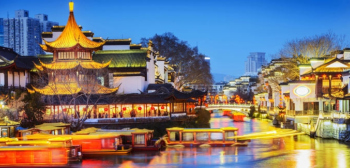
南京
Sabrina
Collier
更新日期
1.4k
46

QS Top 50 Under 50 2020
Craig
OCallaghan
更新日期
2k
3

2019年中国最佳大学
Sabrina
Collier
更新日期
3k
10
Test preparations
Nanjing University
CN




